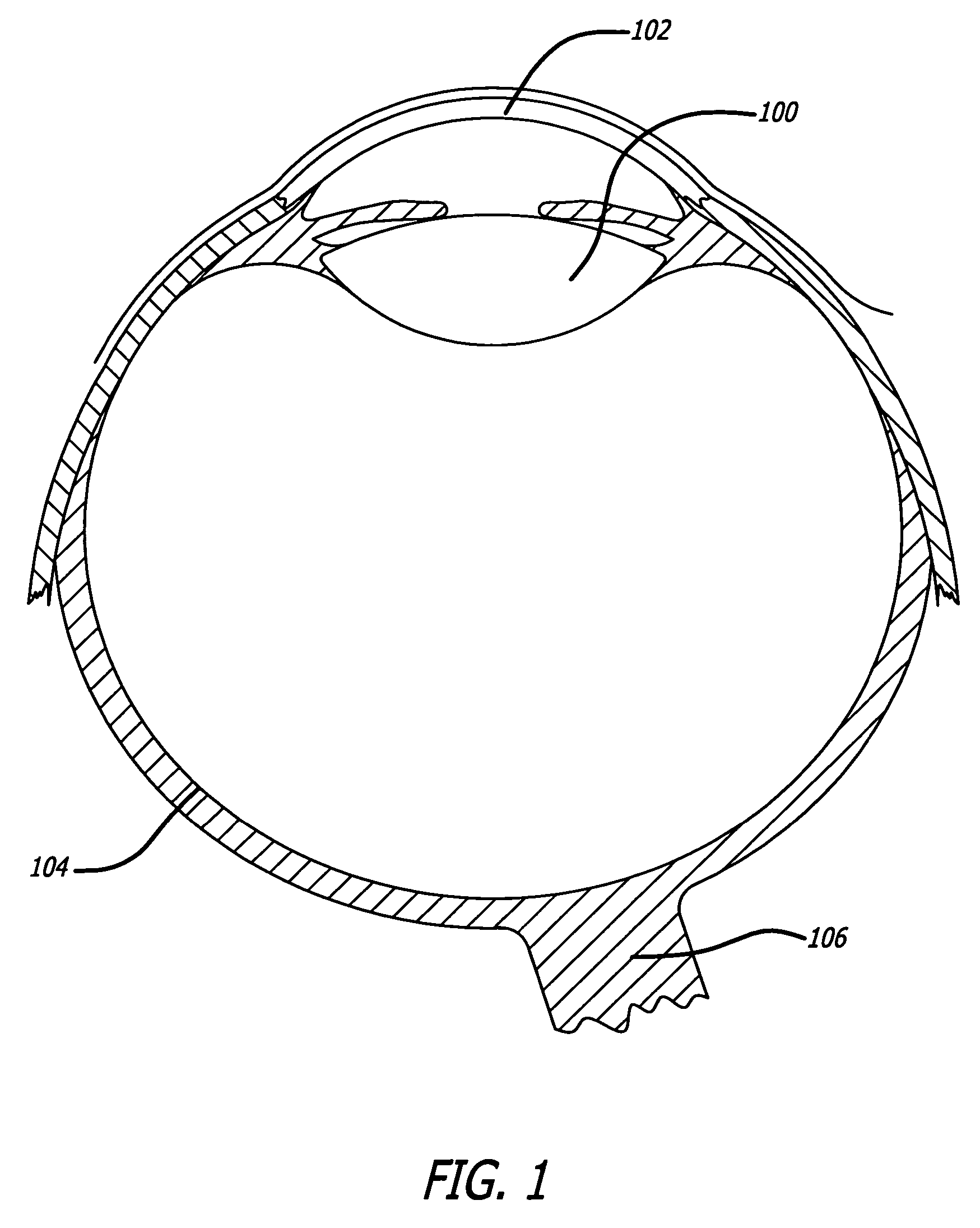Intraocular lenses having a visible light-selective-transmissive-region
a technology of selective transmission and intraocular lens, which is applied in the field of intraocular lens, can solve the problems of reduced vision, reduced vision, and easy damage of retina, and achieve the effects of optimizing visual acuity, reducing glare and halos, and maximizing retinal protection
- Summary
- Abstract
- Description
- Claims
- Application Information
AI Technical Summary
Benefits of technology
Problems solved by technology
Method used
Image
Examples
Embodiment Construction
[0037]The present invention comprises an intraocular lens having a defined visible light-selective-transmissive region. In one embodiment of the present invention visible light selective-transmission region comprises at least one dye that absorbs electromagnetic radiation between the wavelengths of 400 nm to 550 nm (“blue blocker”). In this embodiment central portion of the lens contains a blue blocker while the lens periphery does not (FIG. 3A). The blue blocker may be intrinsic in the material or applied to the lens surface. In bright light the pupil is contracted so that blue blocker can offer potential rentinal protection. In lower lighter, the pupil is dilated and all available light can pass through the periphery. In lower light, retinal protection is not as critical. The blue blocker could be maintained within for example the central portion of the lens, i.e. the central 2 to 4.5 mm, while the lens periphery, i.e. an annular portion from 2.01 mm to 6 mm or 4.5 to 6.5 mm would...
PUM
| Property | Measurement | Unit |
|---|---|---|
| diameter | aaaaa | aaaaa |
| wavelengths | aaaaa | aaaaa |
| wavelengths | aaaaa | aaaaa |
Abstract
Description
Claims
Application Information
 Login to View More
Login to View More - R&D
- Intellectual Property
- Life Sciences
- Materials
- Tech Scout
- Unparalleled Data Quality
- Higher Quality Content
- 60% Fewer Hallucinations
Browse by: Latest US Patents, China's latest patents, Technical Efficacy Thesaurus, Application Domain, Technology Topic, Popular Technical Reports.
© 2025 PatSnap. All rights reserved.Legal|Privacy policy|Modern Slavery Act Transparency Statement|Sitemap|About US| Contact US: help@patsnap.com



